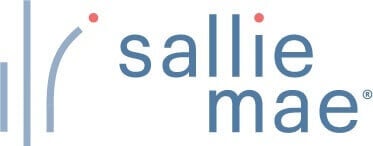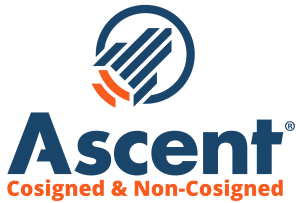 Learning how to create a budget and stick to it is key to managing your money as a college student.
Learning how to create a budget and stick to it is key to managing your money as a college student.- Creating a budget doesn’t have to be complicated – it’s just a matter of making sure you don’t spend more than you have.
- Staying within your budget can help reduce debt and lead to smarter money habits.
Learning how to create a budget is an essential skill for every college student. At a time when money is tight, a budget can help you manage your limited finances, control your spending, and pave the way for a more secure financial future. Here’s everything you need to know about how to make a budget and stick to it.
Importance Of Creating a Budget
Heading off to college can be as challenging as it is exciting. You’ll encounter many firsts, from the first time being away from home to the first time being responsible for your own finances. While some aspects of college life are easy to navigate, managing a monthly budget could require a little more effort.
When you’re managing your finances independently, you’ll quickly realize that there are a lot of different things you have to stay on top of. First up are those recurring due dates on rent, credit card, phone, and any services you subscribe to. One late payment on any of these can mean late fees and fines that could impact your budget significantly. Then there are all the miscellaneous expenses related to everyday living – groceries, transport, and utilities.
It’s important to track of your finances with a budget so you can see where your money is going. For example, let’s say you can’t start your day without your favorite $4.50 coffee. That sounds like a small amount, but the fact is you’d be spending $135 a month on coffee alone. If that still sounds like a reasonable amount, consider this – it adds up to a total of $1,650 a year just on coffee! Think about what you could do with that money instead. You could put it toward paying off student loans for a start. This one small action can lower your total debt and save you even more on accrued interest.
The best way to navigate your finances in college is to learn how to create a budget. Don’t let the B-word scare you. It’s not as scary as you may think.
How To Create a Budget in College: 4 Steps
As we said earlier, creating a budget doesn’t have to be complicated. The goal is to make sure you don’t spend more than you have, and this involves just 4 basic steps.
Step 1: Break Down Your Total Income
Breaking down your total income is the first step to creating an effective budget. This will give you a clearer picture of all one-time funds you’ve received from different sources as well as money that will come in every month.
The best way to break down your income is to create three categories:
- Financial contributions from family: Whatever monetary gifts you received from family toward college expenses will go in this category. Most of these are likely to be one-time contributions, which will have to last you through the semester or academic year.
- Financial aid: All forms of financial aid that you can apply toward the cost of college will go under this category. This includes all gift aid that you receive by way of scholarships and grants as well as federal and private student loans.
- Monthly income: This third category should include all monthly income from a federal work-study job, part-time job, or other recurring funding sources.
You now have a bird’s eye view of all your income sources. Adding up the funds from all sources will give you an overview of how much you have to budget. This can be more helpful than you realize when it comes to managing your money.
Step 2: Add Up Your Monthly Expenses
You know how much money you have but is it enough to cover all your essential expenses? After you’ve paid off the mandatory expenses, how much do you have left over to pay for non-essential expenses – all those fun things? This step will help you determine whether you can afford that daily cup of coffee or not.
As you did with your income sources, it’s smart to also break down your monthly expenses into three categories:
- Fixed expenses: All fixed, recurring payments that must be made every month will go under this category. This includes your rent, utilities, phone bill, and car insurance or cost of a bus/train pass. The payments on these items remains the same month after month.
- Variable essential expenses: Under this category, you’ll need to enter all essential expenses that vary month to month. This will include groceries, textbooks, school supplies, prescription medicines, personal care items, clothing, and gas.
- Emergency fund: By their very nature, emergencies can and do happen any time. And when they do, you’ll need to have some funds to cover the related expenses. No matter how limited your budget, it’s smart to stash away at least a few dollars every month toward building your emergency fund. Whether you’re faced with a medical emergency, an accident, or any other unexpected situation, you’ll have the funds you need at a moment’s notice.
- Variable non-essential expenses: All your non-essential expenses – dining out, gym memberships, takeaways, entertainment, and that daily cup of coffee – will go in this category. These are flexible expenses that can be easily cancelled or cut back without any fallout if your income were to drop for any reason.
Step 3: Track Your Income & Expenses
After completing the first two steps, you should have a pretty good overview of your income and expenditures. Add up all your expenses from step 2 and subtract it from your total income (step 1).
If the final number is positive, you’re on the right track – you’re spending less than your income and have money to spare. This is great news. Use that extra money to shore up your emergency fund, put it into a savings account, or use it to prepay your student loans.
If the final number is negative, that means you’re spending more than your income every month. You need to take corrective steps immediately to avoid getting into debt.
Step 4: Create Your Budget
What your budget will look like depends on the ratio of your income to expenses. Check out Citizens Budget Calculator to get started.
If your balance in Step 3 is positive, you want to keep doing what you’re doing. You can take it a step further and look through your expenses to see if you can still adjust or cut some unnecessary items from your list.
If your balance in Step 3 is negative, you have to make some changes immediately. Go through your list of expenses and take a good hard look at each item. Some will be non-negotiable but there are sure to be a few that you can cut back on. Fewer takeaways or simply dropping that daily $4.50 coffee habit can help reduce the difference between your income and expenses.
Figuring out which expenses can be eliminated and which cannot takes some time and effort but it’s definitely worth the effort.
How To Stick to A Budget
- First, make it a reasonable budget. It’s important to have realistic expectations when creating your plan. Budgeting $20 a month on food is not a realistic goal. Create a budget that is reasonable and doable.
- Set aside funds for essential recurring expenses. Remember you made a list of essential expenses in Step 2 above. At the start of the month, make sure you set aside sufficient funds to cover these costs first. Don’t use this money for anything else. Running short of money to cover your essential expenses can have long-term negative consequences.
- Research purchasing options. Instead of only looking at one place to buy what you need, research a few more options to find the best price. Many on and off campus businesses offer student discounts on a variety of items. Shopping at these stores can save you a lot over time.
- Make a grocery list before you go grocery shopping. It’s easy to give in to impulse buying while in the store. However, if you have a list pre-made, you’re more likely to only buy what is on your list.
- Sleep on your purchases. In the same vein of resisting impulse buys at the grocery store, treat all purchases the same. It’s easy to be tempted by all those gorgeous items so attractively displayed in store windows. But before you give in to the temptation, think of how many hours you need to work to pay for that item. This can easily change your mind fast!
- Use credit cards sensibly. One rule to keep in mind when using credit cards – only use what you can pay back by the due date. If you can’t pay off the entire balance by the end of the month, you’ll be stuck paying interest on the outstanding balance.
Free And Paid Resources That Can Help You Create a Budget
There is no single tool that is best for creating a budget. From a simple Excel sheet to using an online app*, there are several budget-creation tools available. The best one for you will depend on your personal preference. It’s important to use a tool that will simplify the process for you and help you stay more organized.
3 user-friendly FREE tools to create your budget:
- Mint is an online and app-based budgeting tool. It is a favorite among many because of the ease of use and handy features like money tips and a free credit score. Mint has ready-made budgets as well as the option to create your own. You also are able to sync your bank account so that transactions are entered and categorized immediately. Seriously, what can get easier than that?
- EveryDollar is a popular choice by people who love Dave Ramsey. It is an easy-to-use online and app-based budgeting tool aimed to help people track their spending and eliminate debt.
- Excel is the spreadsheet tool in the Microsoft Office Suite. If you are an Excel fan who wants to customize their budget, this is perfect! If you aren’t comfortable creating your own, Excel has plenty of templates to get you started. While more manual than the other options, it has a lot of customization options.
2 Paid budgeting tools:
- YNAB (You Need A Budget) is an easy spreadsheet budgeting tool. It offers excellent insight into your spending through graphs and reports. YNAB does not sync with your financial institution to make automatic transactions. YNAB is $5 a month or $50 a year, but FREE for college students with proof of enrollment.
- Quicken is more in-depth at handling all of your finances, not just budgeting. It can sync with your financial institution for automatic reporting. Quicken has three different products priced at $29.99, $64.99, and $94.99 currently.
The little things you do today will have a big impact on your long-term finances. Learning how to create a budget is the first step toward taking control of your finances. For more help and advice on financing your college education, check out the informative articles and virtual tools available on the College Raptor website.
*Wireless carrier, text, and/or data charges may apply.
Please Note: References to resources or organizations listed in this article do not constitute or imply endorsements or support by Citizens or College Raptor.
| Lender | Rates (APR) | Eligibility | |
|---|---|---|---|
 |
5.34%-15.96%* Variable
3.99%-15.61%* Fixed
|
Undergraduate and Graduate
|
VISIT CITIZENS |
 |
4.92% - 15.08% Variable
3.99% - 15.49% Fixed
|
Undergraduate and Graduate
|
VISIT SALLIE MAE |
 |
4.50% - 17.99% Variable
3.49% - 17.99% Fixed
|
Undergraduate and Graduate
|
VISIT CREDIBLE |
 |
6.00% - 13.75% Variable
3.99% - 13.75% Fixed
|
Undergraduate and Graduate
|
VISIT LENDKEY |
 |
5.50% - 14.56% Variable
3.69% - 14.41% Fixed
|
Undergraduate and Graduate
|
VISIT ASCENT |
 |
3.70% - 8.75% Fixed
|
Undergraduate and Graduate
|
VISIT ISL |
 |
4.99% - 16.85% Variable
3.47% - 16.49% Fixed
|
Undergraduate and Graduate
|
VISIT EARNEST |
 |
5.00% - 14.22% Variable
3.69% - 14.22% Fixed
|
Undergraduate and Graduate
|
VISIT ELFI |









